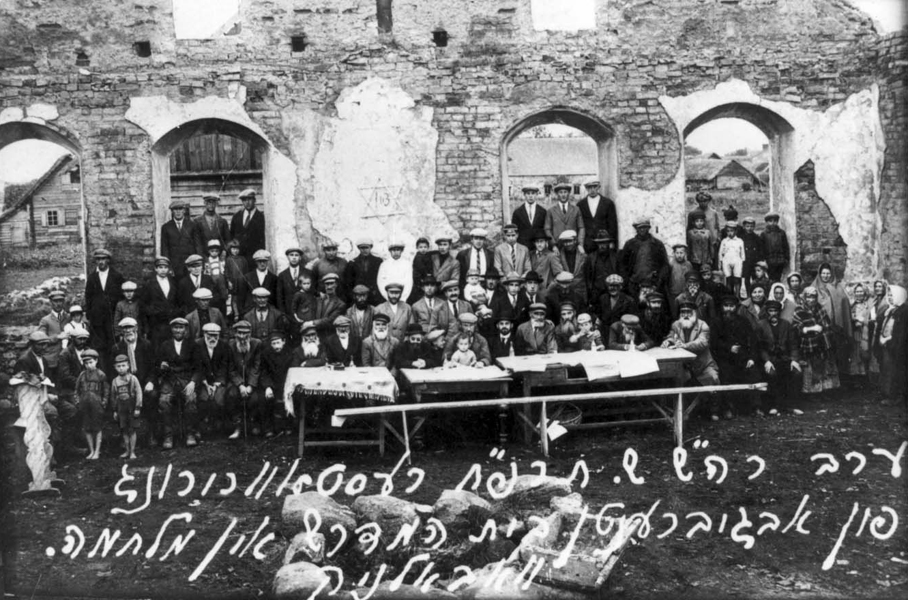The Jews of Vabalninkas, Lithuania, in front of one of the torched synagogues in the town, on the eve of Rosh Hashana 1927
In the course of World War I, the Jews of Vabalninkas, Lithuania, were attacked in pogroms. Under orders from the Russian Army, the Jews of the town were forcibly evacuated and moved deeper into Russia. The town was burned, and its four prayer houses, its ledgers and books were all destroyed. The Jews were only able to save the Torah scrolls and leave with them. With the establishment of independent Lithuania after World War I, some of the Jews began to return to Vabalninkas. By 1923, there were 1,361 Jews living there, constituting about one third of the town's population.
Some 600 Jews were living in Vabalninkas on the eve of the German invasion of the Soviet Union. They made a living in trade, craftwork, agriculture and light industry. Many were Zionists.
When Lithuania was annexed to the Soviet Union in 1940, all shops and factories were nationalized, Zionist youth movements and political parties were disbanded, and Hebrew educational institutions were closed down.
The Germans occupied Vabalninkas on 27 June 1941. Lithuanian nationalists went on the rampage, murdering 86 Jews and arresting many more.
In July, the Jews of Vabalninkas and refugees from surrounding towns were confined in the ghetto that was established in the town, and were sent out for forced labor.
On 18 August, the Jews of Vabalninkas were robbed and then deported to the neighboring town of Pasvalys. Within a week, they had been shot to death in the adjacent forest together with some 1,300 Jews from Pasvalys.
Yad Vashem Photo Archives 1255/1

